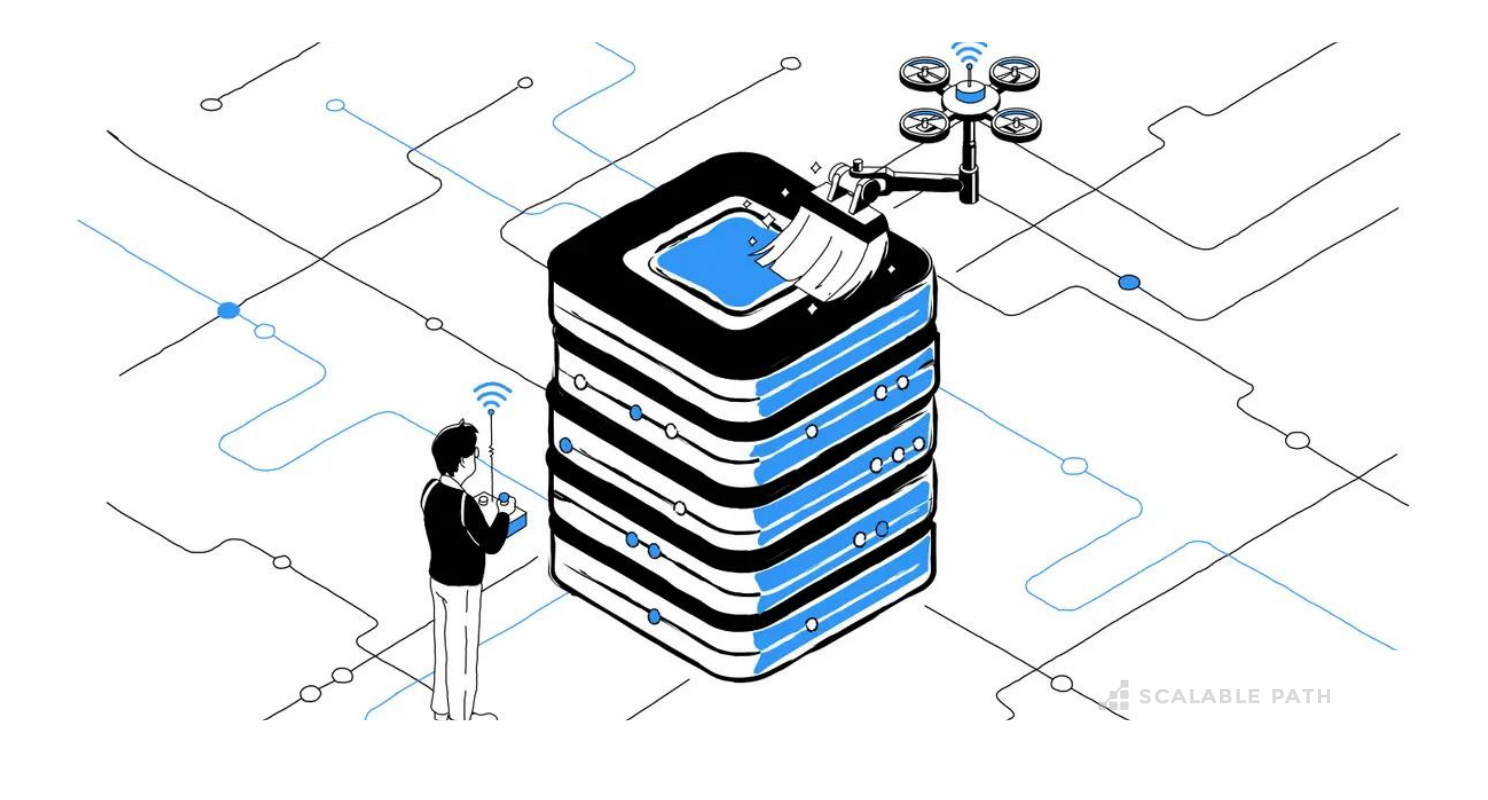Hire the right remote Data Scientists
The ability to extract actionable insights from data is essential for modern businesses. Our data scientists bring expertise in advanced analytics, machine learning, and AI. Whether you're optimizing operations, predicting trends, or personalizing user experiences, our data scientists can help you transform raw data into opportunities.
Senior Data Scientist
Europe
Trusted by

































































15 years, 42,568 developer profiles, and counting
We’ve been doing this longer than almost any company in the industry. Our extensive network of remote developers enables us to find, evaluate, and place high-quality candidates with the technical skills and culture fit you’re looking for.
Our approach to hiring Data Scientists that click
We combine powerful technology and a human interview process to ensure we identify, evaluate, and present you with only the most qualified Data Scientists candidates.

Share your requirements

In-depth, live vetting

Choose your developer

Onboarding & tracking with our support
Discover pre-vetted Data Scientists
There are over 3,700 Data Scientists in Scalable Path’s network who are evaluated not just for their technical ability, but also their values, teamwork, problem solving, and key soft skills.

Matheus
Senior Data ScientistMatheus is an engineer and entrepreneur with four years in research and development, two years as a startup founder, and three years in business/data analytics. Matheus has been programming since 2010 and has been working with Machine Learning and Deep Learning for the last two years. He is a specialist using Tensorflow, Keras, and Pytorch to improve and create products. He uses Linux, Git, AWS, Docker, MySQL, and Agile on a daily basis and has experience in E-commerce, IoT, and Remote Sensing. Matheus also has strong writing skills.
Skills: English, Git, Data Science, Snowflake, FastAPI, Continuous Integration, Kanban, TensorFlow, Natural Language Processing, Data Visualization

Nicolas
Data Scientist and Machine Learning EngineerNicolas is a data scientist with 5+ years' experience exploring, preparing, modeling, and evaluating data. He's also skilled in analyzing/modeling experiments (such as A/B test and multi-armed bandit). Nicolas has a solid background working with classification models and recommendation systems, leading a team, and managing product roadmaps.
Skills: Data Analysis, English, Data Visualization, Python, Machine Learning, Data Science, Bash, Natural Language Processing, Git, Statistics

Gerzson
Senior Data ScientistGerzson is an experienced machine learning engineer and has worked on more than 20 machine learning projects across industries, including HR, marketing, stock markets-forex and cryptocurrencies, commerce, online games implementing neuronal networks, NLP, and REST API built with Python.
Skills: Data Science, Machine Learning, Requirements Gathering, Technical Design, Natural Language Processing, Data Visualization, TensorFlow, Python, Statistics, Data Analysis

Agustin
Data Scientist and Machine Learning EngineerAgustín is a versatile data scientist and data engineer particularly interested in data analysis and artificial intelligence. For these reasons, he has focused his career on machine learning processes, especially DNNs. He is also a experienced Python developer.
Skills: English, Natural Language Processing, Machine Learning, Data Science, MongoDB, Redis, Linux, Data Visualization, Statistics, Data Analysis

Mark
Senior Data ScientistMark is a passionate individual who loves to learn and be challenged every day. He has a Master's degree in Quantum Physics, a certificate in Big Data Analytics, and extensive experience in the agriculture and scientific industries. Mark has developed models correlating Twitter trends with major crime indicators for the police services and equipped farmers with the tools needed to predict crop yields.
Skills: Client Management, Requirements Gathering, Documentation, English, Python, Data Science, Natural Language Processing, Data Visualization, Statistics, Data Analysis
Your role? Simply interview presented candidates and hire the one you like best.
After we’ve completed our rigorous vetting, you have the opportunity to meet the best-suited candidates in a 1:1 video call. Review in-depth candidate notes, schedule interviews with your favorites, and make your pick. You’re in full control.
What our clients are saying
After recently using other platforms, I’m impressed with the transparency & thoroughness of Scalable Path, as well as how aligned the candidates they’ve sent over are with our criteria.
Head of Engineering, Fiveable

Finding the right fit for my AI startup was tough—I needed someone with passion and skill. Scalable Path delivered fast. We couldn't have hit our goals without them.
Founder & CEO, Smarty

The team Scalable Path assembled for us crushes the mark on every critical point. The quality, speed and cost are impressive, but it’s the excellent customer experience and trust we’ve developed that set them apart.
SVP Products, Prolucent Health

FAQs
Answers to questions about how Scalable Path engages with clients.
At Scalable Path, every Data Scientist is carefully vetted to ensure they are among the best in their field. Our thorough screening process, including application questions, screening interview and technical exam, validates the skills of each applicant and ensures that we find the best candidates for your business needs.
Although we have Data Scientists from all over the world, we commonly work with Data Scientists in regions like Latin America and Eastern Europe. This keeps our rates low while ensuring teams and clients are in overlapping time zones, which is optimal for collaboration. Rates vary per developer but typically range between $50-$75 USD/hour.
Each applicant goes through an initial screening interview where we evaluate the candidate's experience, personality, availability, and English communication skills. If the candidate passes, our technical experts conduct a 1-hour technical screen-sharing interview where they complete a real-world coding exercise relevant to the project they are applying for. Only the best candidates get presented to our clients, so you can feel confident that each Data Scientist you work with will communicate well and excel in their field.
We record all of our technical interviews with our developers and can share access with our clients. We offer this so that clients can gain a better understanding of how the candidate performed during the technical assessment, how they work, and what their strengths are before interviewing or hiring them.
We can generally present candidates to clients within a week. We take the time to thoroughly vet each candidate according to your unique project and business needs to ensure they are a great fit for your role. In some cases, if the stars align, we can present candidates in a day or two, but we prefer to underpromise and overdeliver.
Our mission is to providethe best possible hiring experience
Speak with a seasoned software architect from the start. Not a salesperson.
Articles from our blog

Data Science
Data Preprocessing Techniques: 6 Steps to Clean Data in Machine Learning
The data preprocessing phase is the most challenging and time-consuming part of data science, but it’s also one of the most important parts. Learn best techniques to prepare and clean the data so you don’t compromise the ML model.

Nicolas Azevedo
Data Scientist and Machine Learning Engineer

Data Science
What is Exploratory Data Analysis? Steps & Examples
One of the most important things you can do when approaching a data science project is really understand the dataset you’re working with as a first step. Without a proper data exploration process in place, it becomes much more challenging to identify critical issues or successfully carry out a deeper analysis of the dataset. Exploratory Data Analysis (EDA) in Data Science is a step in […]

Nicolas Azevedo
Data Scientist and Machine Learning Engineer

